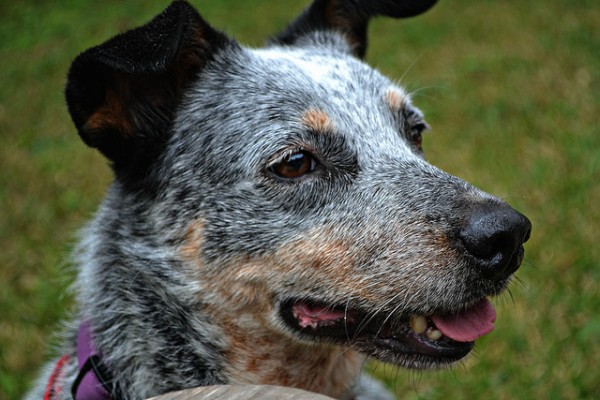By Dane Lorica, | December 20, 2016

A new study suggests that stress and anxiety can turn a dog’s muzzle fur gray. (Erin Murphy/CC BY-SA 2.0)
A new study suggests that stress and anxiety can turn dog's fur gray.
Researchers found out that impulsive and anxious puppies have higher chances of getting premature gray hair on their muzzles than those who act oppositely.
Like Us on Facebook
The lead author of the study Camille King said that based on her experience in working with canine species, she suspects that impulsiveness and anxiety trigger the growth of gray hair on the muzzle. To prove this hypothesis, King and her team went around Colorado to visit veterinary clinics, pet places and other areas where they could interview 400 dog owners.
The research only involved pets with dark colored fur to easily observe the color changes on the muzzle. Only dogs between one and four years old were included in the study simply because aging animals commonly have gray hair. Meanwhile, anxiety was measured based on the observed behavioral changes such as loss of hair during isolation, vet visits or exposure to new locations, destroying things and cowering in the presence of strangers.
Meanwhile, impulsiveness was assessed based on the pet's calmness, agitation, and hyperactivity following exercise. Two raters without connection to the study assessed each dog's picture and graded 0 to 3 - with 0 equivalent to the absence of muzzle grayness.
Gray hair is also more common in bitches than in sires. Dogs who are afraid of strangers and noises also show an increase in the grayness of their muzzle. The researchers pointed out that the animal's current health problem, size, and fixed status (castrated or spayed) do not influence the premature growth of gray muzzle hair.
Thomas Smith said that their findings are striking as it agrees with existing studies that stress changes hair color. The team added that their study is beneficial in the field of animal behavior and welfare.
"If dog professionals are able to note premature graying in their assessments and or training, then these dogs might be assessed more thoroughly for anxiety/impulsivity/fear problems and or training, and, if necessary, started on behavior modification programs earlier their developmental life stages," the authors recommended.
The investigation into gray hair in dogs triggered by stress and anxiety was published in the journal Applied Animal Behavior Science.
-
Use of Coronavirus Pandemic Drones Raises Privacy Concerns: Drones Spread Fear, Local Officials Say

-
Coronavirus Hampers The Delivery Of Lockheed Martin F-35 Stealth Fighters For 2020

-
Instagram Speeds Up Plans to Add Account Memorialization Feature Due to COVID-19 Deaths

-
NASA: Perseverance Plans to Bring 'Mars Rock' to Earth in 2031

-
600 Dead And 3,000 In The Hospital as Iranians Believed Drinking High-Concentrations of Alcohol Can Cure The Coronavirus

-
600 Dead And 3,000 In The Hospital as Iranians Believed Drinking High-Concentrations of Alcohol Can Cure The Coronavirus

-
COVID-19: Doctors, Nurses Use Virtual Reality to Learn New Skills in Treating Coronavirus Patients







